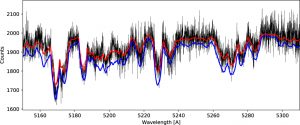We present the discovery of KELT-21b, a hot Jupiter transiting the V = 10.5 A8V star HD 332124. The planet has an orbital period of P = 3.6127647 ± 0.0000033 days and a radius of 1.586 RJ. We set an upper limit on the planetary mass of MP< 3.91 MJ at 3σ confidence. We confirmed the planetary nature of the transiting companion using this mass limit and Doppler tomographic observations to verify that the companion transits HD 332124. These data also demonstrate that the planetary orbit is well-aligned with the stellar spin, with a sky-projected spin-orbit misalignment of λ =-5.6° . The star has Teff=7598 K, M* =1.458 M☉ , R* =1.638 R☉ , and vsini* =146 km s-1, the highest projected rotation velocity of any star known to host a transiting hot Jupiter. The star also appears to be somewhat metal poor and α-enhanced, with Fe/H=-0.405 and [α/Fe] = 0.145 ± 0.053 these abundances are unusual, but not extraordinary, for a young star with thin-disk kinematics like KELT-21. High-resolution imaging observations revealed the presence of a pair of stellar companions to KELT-21, located at a separation of 1.″2 and with a combined contrast of 6.39 with respect to the primary. Although these companions are most likely physically associated with KELT-21, we cannot confirm this with our current data. If associated, the candidate companions KELT-21 B and C would each have masses of ∼0.12 M☉ , a projected mutual separation of ∼20 au, and a projected separation of ∼500 au from KELT-21. KELT-21b may be one of only a handful of known transiting planets in hierarchical triple stellar systems.

Read more: Johnson et al. 2018, AJ, 2018, 155, 100
